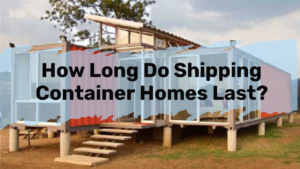Tiny homes are famous for their sleek, modern design and its efficiency. Building one allows homeowners to cut back on electricity and water costs. Its mobility does raise the question: how are tiny homes powered if they can easily be moved from one place to the other?
Debunking Myths About Tiny Homes
Tiny houses are way too similar to standard residences. They actually work as a normal house and often source their water from filtering rainwater. Tiny houses also get their electricity from generators or solar panels.
The same attributes are true to some residential houses. In fact, most homes install rooftop solar arrays, especially those that live within areas that always experience power outages.
The same goes for those who have a spare generator whenever the power’s out.
The difference between tiny homes and normal houses is this: it is way cheaper to sustain electricity in a tiny home than the standard types of houses.
Thus, the number one factor to consider in deciding what source of energy your tiny home will have is the budget that you are willing to allocate for it.
Using A Power Generator For Tiny Homes
Powering your tiny house with a generator gives you more control. It is the perfect choice for those who do not want to stick to one place. In fact, those who own RV homes power their tiny homes with generators.
It is also more affordable than solar panels. For a median price of $2,000, a generator gives you power throughout the day.
Those who are environment-friendly use propane tanks to power up their generators. They may be costly than gasoline, but they have lower carbon emissions making your tiny home greener than most.
In fact, there are generators that only run on clean energy and natural fuel, which does cost more. However, this way, you can power your tiny house efficiently without harming the environment.
Solar Energy For Tiny Homes
Solar energy is an environmentally-friendly source of energy in tiny homes. It uses the sun’s energy and converts it into electricity. The panels would absorb the heat throughout the day. What’s great about solar energy is that the sun’s power is unlimited.
Since solar energy does not use fuels to power up, its adverse effects on the environment are less severe. In fact, the sun’s power is a natural heating system and is oftentimes disregarded in the modern world when it is actually the strongest source of energy.
Contrary to popular belief, solar panels also work even when it’s gloomy out. The power that you take from the sun during the daytime can be stored and used during the night as well. This is what makes solar energy an energy-saving option.
Solar energy is also cost-efficient. It can save up to 20% of energy compared to generators. The only expensive thing about solar panels is when you opt for an upgrade.
However, the extra cost of upgrading can be outweighed by the tax breaks.
Up to 30% of installation costs are tax-deductible for those who opt for sustainable energy in powering their homes.
In fact, others can even acquire tax reliefs at the end of each tax season for choosing this option.
The incentive is given to green homeowners because they contribute to minimizing the national power grids.
Tax deductibles are given by the government as its way of thanking those who go the extra mile in making their homes environmentally friendly.
Also, solar energy is easier to install. It may take several days to install it but it benefits you far greater in the long run. Most solar energy companies even give you a money-back promise. That is how effective this energy source is.
So, how do solar panels work? First, your personal power grid would be converted into solar energy.
Despite the natural source of the sun, it is more likely that solar panels may not supply 100% of your electrical needs especially when you haven’t stored as much energy during the day and you consume more power during the night.
Solar panels may be attached to your roof or beside your home. The placement depends on where the sun hits your house. Solar experts would guide you throughout the process of installation.
Make sure that the panels are situated in an area where the sun is not blocked by other figures. Since tiny homes only consume a minimum amount of space, this won’t be a problem. It would also require lesser power to sustain one.
The Bottom Line
Creating tiny homes may be efficient, environmentally friendly, and easily sustainable but it comes with sacrifices too. You would need to get used to living with minimal energy.
Luckily, making tiny homes is affordable and sustainable at the same time. Thanks to the many technological advancements of this day and age, it is completely easy to set up a sustainable energy source for your tiny abode.
As long as you lay out a doable plan that involves sustainable energy, you may live comfortably despite the smaller space of a tiny home.
It is also best to seek professional help when setting up tiny homes. Contractors and solar energy experts help you establish power systems that will last you for several years without experiencing energy crashes in the long run.


